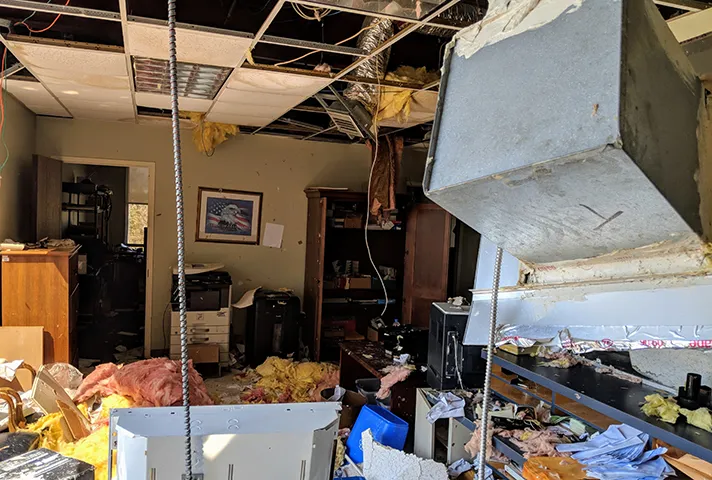Committed to efficiency, safety, and cost containment, the Judiciary has actively reduced the space it occupies in buildings around the country, while also working with the General Services Administration to replace outmoded courthouses with modern, secure facilities.
Cost Savings through Space Reduction
In September 2018, the Judiciary capped a multi-year effort to cut costs by reaching its goal of reducing total office and courtroom space by 3 percent nationally, approximately 870,000 square feet. In fact, the initiative exceeded its goal by more than 230,000 square feet of space, for a total of over 1.1 million square feet of space reductions. Shrinking its space footprint has allowed the Judiciary to cut its annual rent payments by approximately $36 million, for a total of $107 million in savings since the initiative began in 2013.
The space reduction initiative is a multi-pronged effort to contain costs by reducing rent payments and making innovative use of technology to foster efficient use of existing office and courtroom space. The project involves a close collaboration among the courts, the Administrative Office of the U.S. Courts (AO), and the General Services Administration (GSA).
The Judiciary in 2018 also continued its “No Net New” space policy, which requires any increase in square footage within a circuit to be offset by an equivalent reduction in square footage. While the space footprint reduction policy expired at the end of fiscal year 2018, the No Net New policy requires ongoing vigilance by the courts to manage future space growth. The policy excludes new courthouse construction, renovation, or alteration projects approved by Congress.
In addition to space reduction and the No Net New policies, the Conference directed each circuit judicial council to formulate a space and rent management plan for achieving space reduction and to explore opportunities to reduce court space by maximizing technology and flexibility in the workplace. These plans will be vital to the circuits’ successful space management efforts in the No Net New era.
Emergency Preparedness
Two hurricanes, Florence and Michael, and two typhoons, Mangkhut and Yutu, that struck the United States and its territories in 2018 had a major impact on court operations and the lives of court employees in the affected areas. The AO’s Judiciary Emergency Response Team worked closely with the affected courts, the GSA, and other federal partners to help restore and sustain operations. Follow-up efforts continued into 2019.
Court facilities in Wilmington, NC, Panama City, FL, and the Northern Mariana Islands sustained major damage. Court employees in those areas suffered extensive damage to personal property and some lost homes. Emergency relocation assistance and temporary telework for staff were authorized while the GSA obtained emergency lease space or conducted building repairs. Some employees remained in alternative housing at the close of 2018. The Federal Court Clerks Association, the National Conference of Bankruptcy Clerks, the National Association of Federal Defenders, and other organizations provided relief during the recovery process, donating funds, leave reserves, and supplies. Judges and staff outside affected areas also stepped in to assist with pending cases in storm-ravaged courts.

A view of some of the damage done by Hurricane Michael to the federal courthouse in Panama City, FL, in October 2018.
The AO also provided support to the Eastern District of California during the Carr and Ferguson wildfires, coordinating emergency relocation and supplemental funding.
To help courts plan for responding to disasters, the AO during 2018 conducted four regional hurricane preparedness seminars with high-risk courts, nine continuity of operations workshops, and three preparedness workshops for courts outside the continental United States. Each event was designed to increase the Judiciary’s ability to respond to and recover from major incidents by refining plans, building relationships with federal and state partners, and identifying areas for improvement.
Annual Report 2018
- Annual Report 2018
- Funding/Budget
- The Courts and Congress
- The Federal Bench
- Accountability and Resource Management
- Facilities and Security
- Public Outreach
- Court Operations and Case Management
- Defender Services
- Probation and Pretrial Services
- Human Resources
- Information Systems and Cybersecurity
- Recent and Proposed Amendments to Federal Rules
- In Profile
